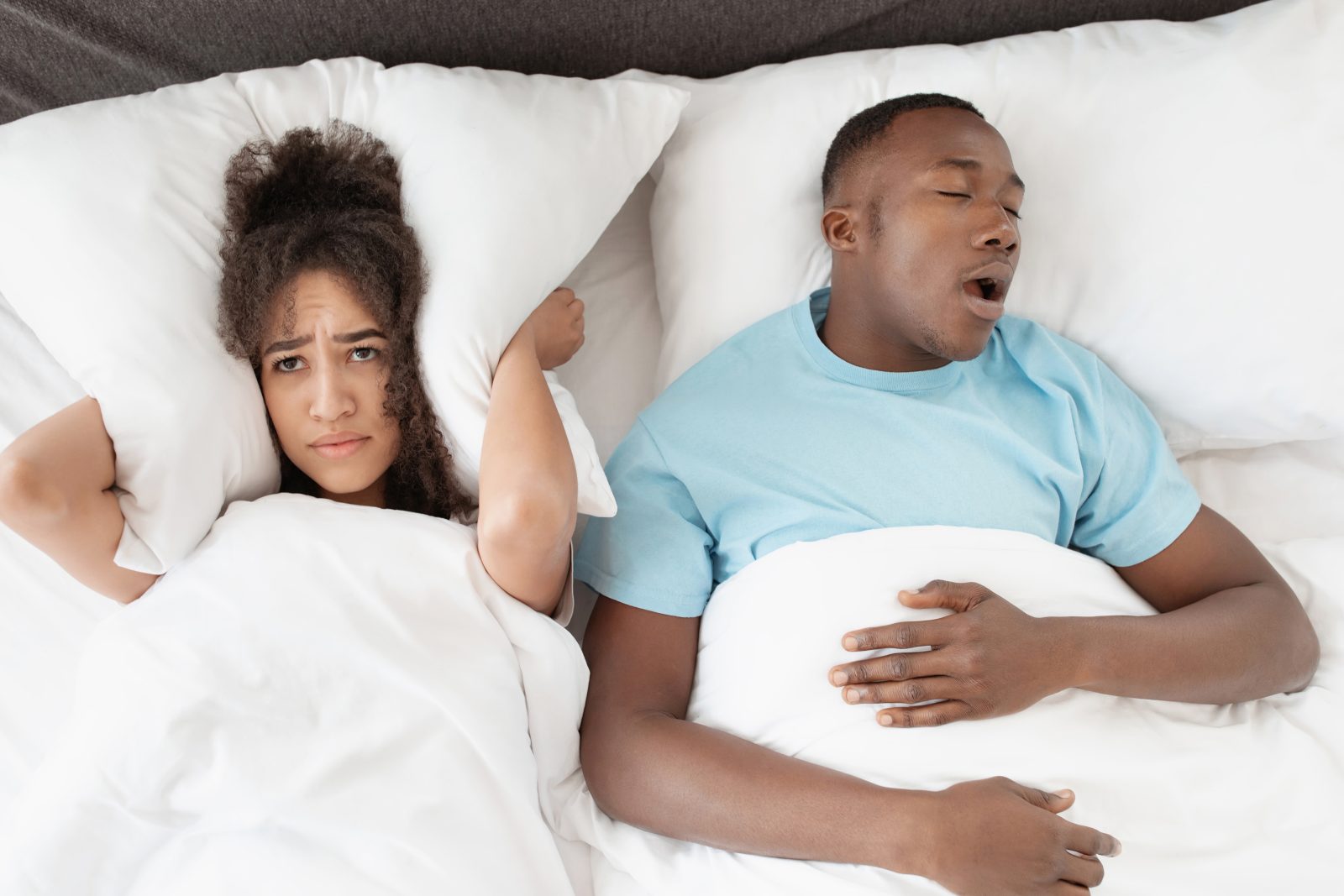Sleep apnea is a prevalent and potentially serious sleep disorder characterized by recurring interruptions in your breathing during sleep. Left untreated, sleep apnea can contribute to the development of conditions like type 2 diabetes and heart disease, as well as increase the risk of stroke and heart attacks.
Sleep apnea can affect individuals of all ages, including toddlers, children, and adults, with varying signs and symptoms depending on age. This comprehensive guide outlines the key indicators and symptoms of sleep apnea.
Signs and Symptoms of Sleep Apnea in Adults
If you recognize several of these 13 signs in yourself, there’s a strong possibility that you may be experiencing sleep apnea:
- Frequent loud snoring.
- Reports from your sleep partner confirm loud snoring and moments where you stop breathing during sleep.
- Sudden awakenings accompanied by a sensation of breathlessness.
- Occasional awakening due to choking or gasping for air.
- Frequent nighttime trips to the bathroom.
- Waking up with a dry mouth or a sore throat.
- Regular morning headaches.
- Struggling with insomnia, making it difficult to stay asleep.
- Experiencing excessive daytime sleepiness (hypersomnia).
- Battling issues with attention, concentration, or memory while awake.
- Mood disturbances are characterized by irritability and mood swings.
- Possessing risk factors for sleep apnea, such as being overweight or obese, consuming alcohol, or smoking tobacco.
- A decline in interest in sexual activities or the experience of sexual dysfunction.
These symptoms serve as important indicators, and if you identify with a significant number of them, it is advisable to seek medical evaluation for potential sleep apnea.
Recognizing Sleep Apnea Symptoms in Children
As per information from Johns Hopkins Medicine, it’s estimated that 10 to 20 percent of children who snore may be affected by sleep apnea. Overall, roughly 3 percent of children are believed to have sleep apnea.
Many children with untreated sleep apnea exhibit behavioral, adaptive, and learning difficulties that closely resemble the symptoms associated with ADHD. These may include:
- Struggles with learning.
- A limited attention span.
- Subpar academic performance.
To identify potential sleep apnea in your child, watch for these telltale signs:
- Loud snoring: Your child snores audibly during sleep.
- Mouth breathing: They consistently breathe through their mouth, whether asleep or awake.
- Pauses in breathing: Noticeable interruptions in breathing occur during sleep.
- Bedwetting: Your child experiences bedwetting incidents.
- Daytime sleepiness: They frequently display excessive daytime sleepiness.
Recognizing these symptoms in your child is crucial, as they may indicate the presence of sleep apnea. If you observe these signs, it is advisable to seek medical evaluation and guidance for your child’s sleep health.
Detecting Sleep Apnea Symptoms in Toddlers
When assessing the possibility of a sleep disorder in your toddler, watch for these key indicators of sleep apnea during their sleep:
Audible snoring and breathing difficulties: Your toddler snores loudly and appears to struggle with breathing during sleep.
- Breathing pauses: Noticeable interruptions in breathing patterns occur while they sleep.
- Restlessness: Your toddler frequently exhibits restless movements during their sleep.
- Coughing or choking: Episodes of coughing or choking may disrupt their sleep.
- Excessive sweating: They perspire profusely while sleeping.
While your toddler is awake, be attentive to the following signs:
- Irritability, crankiness, and frustration: Your child displays heightened irritability and frustration.
- Inappropriate daytime sleepiness: They tend to fall asleep at inappropriate times during the day.
- Tonsil- or adenoid-related health issues: If your toddler experiences issues related to their tonsils or adenoids, it may be relevant to their sleep health.
- Growth concerns: If your toddler is growing more slowly than expected in terms of both height and weight, this could be a factor to consider.
Recognizing these signs in your toddler is essential, as they may indicate the presence of sleep apnea. If you observe these symptoms, it is advisable to consult with a healthcare professional for a thorough evaluation of your toddler’s sleep condition.
When to Seek Medical Attention
If you identify warning signs suggestive of sleep apnea in yourself, it’s essential to have a discussion with your primary care physician. They can offer personalized advice tailored to your specific situation or refer you to a sleep specialist if necessary. A sleep specialist can conduct a comprehensive sleep study, known as a polysomnogram, to aid in diagnosing sleep apnea. This test monitors various parameters, including brain activity, eye movements, breathing patterns, and blood oxygen levels. It also records any instances of snoring, gasping, or breathing cessation during sleep.
For concerns related to your child displaying signs of sleep apnea, it is advisable to consult with your pediatrician. Following an assessment and diagnosis, your pediatrician will provide recommendations for treatment options. In many cases, they may refer you to an otolaryngologist, a specialist in ear, nose, and throat conditions, to explore the possibility of resolving the issue by addressing the tonsils and adenoids.
If you observe potential signs of sleep apnea in your toddler, it’s crucial to share your observations with your pediatrician. Their evaluation will encompass factors such as your toddler’s weight and potential allergies, assessing their impact on sleep. After an examination of your toddler’s upper airway, the pediatrician may refer you to a pulmonologist, a specialist in respiratory conditions, or an otolaryngologist. In some cases, the removal of tonsils and adenoids may be recommended as part of the treatment plan.
Key Takeaway
Sleep apnea is a more prevalent condition than one might imagine, affecting not only adults but also children and toddlers. If you, your child, or your toddler are displaying signs that suggest the presence of sleep apnea, it is essential to recognize the potential for significant health risks. Schedule an appointment with your healthcare provider to address your concerns, discuss symptoms, and explore potential treatment options. Prioritizing early intervention and diagnosis can be instrumental in ensuring a healthier sleep and overall well-being.
















Find Us on Socials